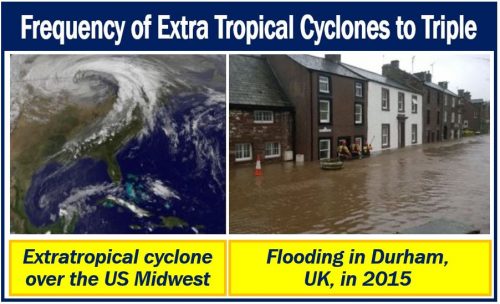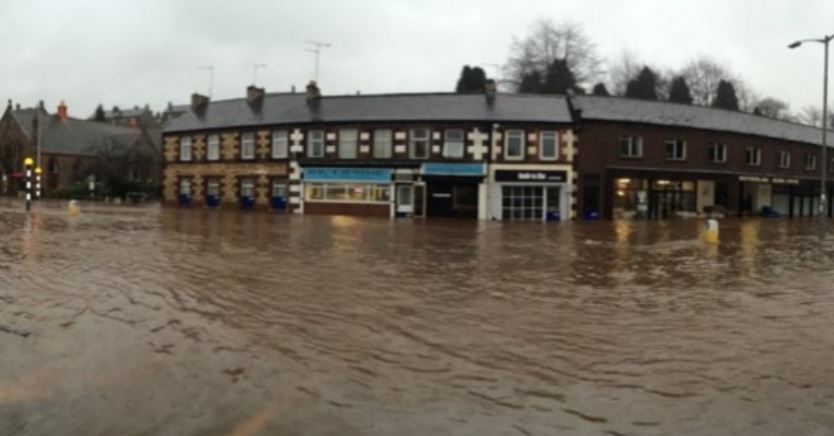There could be a threefold increase in extratropical cyclones, which bring flooding to North America and Europe, due to climate change. Powerful storms that trigger extreme weather conditions such as flooding could wreak social and economic havoc in Europe and North America. The threefold increase could occur by the end of this century, says a team of researchers in the United Kingdom warn.
Climate change refers to the long-term change in Earth’s average temperatures and weather patterns. When long-term average temperatures rise, we can also use the term ‘global warming.’
Researchers from the Universities of Exeter, Oxford, and Reading (all in UK) wrote about their study and findings in the journal Environmental Research Letters (citation below). The authors were Matt Hawcroft, Ella Walsh, Kevin Hodges, and Giuseppe Zappa.
Dr Matt Hawcroft led pioneering research which showed new and detailed information on the frequency of extratropical cyclones. Dr. Hawcroft is a Research Fellow at Exeter University’s College of Engineering, Mathematics and Physical Sciences.
Extratropical cyclones in the Northern Hemisphere
Unless there is a dramatic reduction in greenhouse gas emissions, the frequency of extratropical cyclones will increase significantly, the study showed.
Greenhouse gases are gases that absorb and emit radiation. In other words, they keep our planet’s surface warm. Methane and carbon dioxide, for example, are greenhouse gases.

The impact on local communities could be severe. Storms will be more intense and extreme, leading to greater large-scale flooding events. Events like those experienced by residents in Somerset in 2013/14 and Cumbria in 2015 will become much more common.
Dr Hawcroft said:
“It is expected that precipitation extremes will increase in intensity and frequency in a warmer climate. In this work, we have attributed those changes to the events which bring much of our large-scale rainfall and flooding.”
“This additional information, on the dynamical nature of changes, is important since it provides clear information on the nature and impact of the changes in precipitation that can be used, for example, in policymaking and adaptation planning.”
Extratropical cyclones
Extratropical cyclones are steered by the jet stream. They play a major role in the day-to-day weather variability across large parts of Europe and North America.
There is low atmospheric pressure in the center of these storms, with air drawn cyclonically around the low pressure. In other words, the air around the central area moves in an anti-clockwise direction.
In a press release, the University of Exeter wrote:
“A key piece of information for policymakers and governments looking to mitigate against such extreme weather conditions is the ability to project where and how often these storms may occur in the future. However, current climate model projections are affected by huge uncertainties.”
Analyzing current and future storms
The authors analyzed the behavior of current and future storms. They used state-of-the-art storm tracking and modeling techniques.
They approached the analysis in a ‘storm centered framework.’ Thus, they were able to evaluate changes in the intensity and frequency of extratropical cyclones more consistently than previous studies had suggested.
Their models projected that the incidence of the most intensely precipitating extratropical cyclones in North America and Europe would triple by the end of this century.
Dr Hawcroft said:
“Due to the complexity of the circulation response to warming, there is much uncertainty in regional patterns of climate change. Given this uncertainty, it is important to be able to distil clear information where that is available.”
“Here we show that in spite of these complexities, we are still able to provide large and consistent projections of change in these highly impactful events.”
Citation
“Significantly increased extreme precipitation expected in Europe and North America from extratropical cyclones,” Matt Hawcroft, Ella Walsh, Kevin Hodges, and Giuseppe Zappa. Environmental Research Letters, Volume 13, Number 12. DOI: https://doi.org/10.1088/1748-9326/aaed59.

